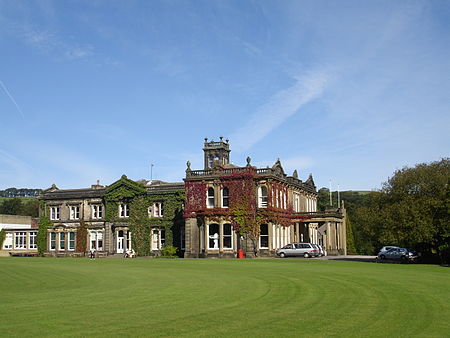Malsis Hall

Malsis Hall is a historic building in Cross Hills, a village in North Yorkshire, in England. The first Malsis Hall was a manor house in existence by 1340, when it was owned by the Copley family. The hall was burned down in the 1540s during local riots against enclosure. A new hall was built for Alvery Copley in about 1550. In 1621, the Copleys sold the house to Richard Horsfall, but he was on the losing side in the English Civil War and had to raise funds by letting out the hall. It was sold in 1786, at which time it had a 300-acre estate, but by the 1860s was dilapidated. Mary Spencer inherited the house, and her husband, James Lund, funded its demolition and replacement with a new country house, completed in 1866. Later in the century, a tower was added, followed by an extension with a portico for carriages, and a service block. The hall was converted into Malsis School in 1920, with work including the addition of a war memorial chapel. The school initially leased the building, but later purchased the estate. It closed in 2014, and was converted into a care home. The building has been grade II listed since 1984. The building is constructed of stone with angle pilasters, an entablature, a pierced arcaded parapet with urns, and a slate roof, and is in Italianate style. There are two storeys, and an entrance front of twelve bays, with a porte cochère. Most of the windows have two lights, and cornices on consoles, those in the upper floor with round heads, and those in the ground floor with segmental heads. In the centre is a belvedere tower. The chapel has stained glass by John Piper.
Excerpt from the Wikipedia article Malsis Hall (License: CC BY-SA 3.0, Authors, Images).Malsis Hall
Geographical coordinates (GPS) Address Nearby Places Show on map
Geographical coordinates (GPS)
| Latitude | Longitude |
|---|---|
| N 53.89704 ° | E -2.01766 ° |
Address
BD20 8FH , Glusburn and Cross Hills
England, United Kingdom
Open on Google Maps










